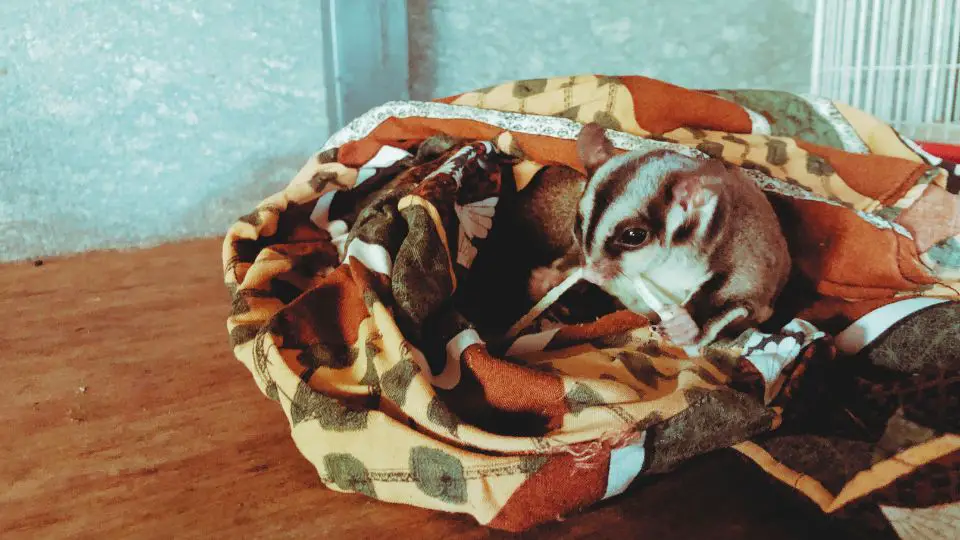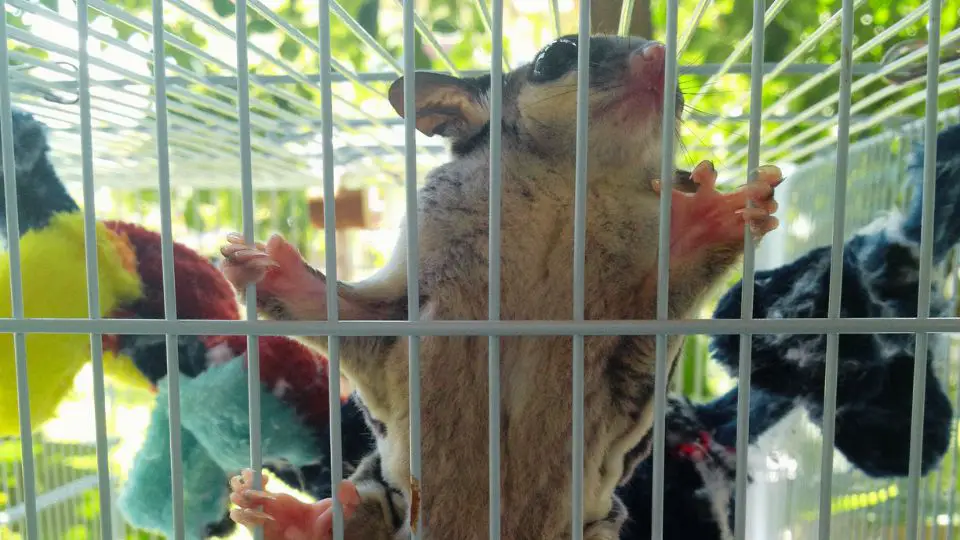Sugar glider pregnancy is a complicated and delicate process. There are many things that can go wrong, so it’s important to be as informed as possible before breeding sugar gliders.
This article will cover everything you need to know about sugar glider pregnancy, from the early stages of gestation to labor and delivery.
How to know if your sugar glider is pregnant
The easiest way to know if your sugar glider is pregnant is by doing a physical examination. However, this should only be done by a qualified veterinarian.
Some of the physical signs that your sugar glider is pregnant include:
Enlarged abdomen
Your sugar glider will have an enlarged abdomen if she is pregnant. This is due to the fact that her internal organs are beginning to shift to make room for the developing fetus.
Nipple development
Another physical sign of sugar glider pregnancy is the development of nipples. This is because the mammary glands are preparing to produce milk for the upcoming offspring.
Nesting behavior
Another sign that your sugar glider is pregnant is if she begins to exhibit nesting behavior. This means that she will start to gather materials, such as leaves and twigs, to build a nest.
Increased appetite
Pregnant sugar gliders will also have an increased appetite. This is because they need extra nutrients to support the growing fetus.
Behavioral changes
Finally, pregnant sugar gliders may also exhibit changes in behavior. They may become more aggressive or territorial as they prepare to defend their nest.
What to expect when your sugar glider gives birth
Usually, there are 4 stages of labor in sugar gliders.
Gestation period
The gestation period for sugar gliders is 15-17 days. This is the time from when the female is impregnated to when she gives birth.
In this period, the female will build a nest and gather materials to line it.
In the pouch (ITP)
The ITP stage is the period from when the fetus enters the mother’s pouch until it is born. This stage lasts for approximately 8-10 weeks.
During this time, the mother will provide all the necessary nutrients for the fetus through her milk. The fetus will also continue to develop and grow inside the pouch.
Out of pouch (OOP)
The OOP stage is the period from when the baby sugar glider is born until it is weaned. This stage lasts for approximately 2 months.
During this time, the baby sugar glider will stay close to the mother and continue to drink her milk. In the first 2-4 weeks the fur will start to grow and the eyes will open. After 4 weeks, the baby sugar glider will begin to exploration and play.
Weaning
The weaning stage is the period from when the baby sugar glider is no longer dependent on the mother’s milk to when it is independent. This stage usually lasts for 6-8 weeks.
During this time, the baby sugar glider will start to eat more solid food and become less dependent on the mother. The baby will also start to explore its surroundings more and interact with other sugar gliders.
Once the little babies, or joeys, are fully weaned, you can take them out and play with them as much as you want! Just make sure to always supervise them, as they are still very delicate and fragile.
Remember that, if you want to keep them, you should neuter them until they reach sexual maturity at around 8-12 months old. Otherwise, they may start to exhibit some unwanted behaviors, such as spraying urine, due to their hormones.
How to care for a pregnant sugar glider
With a few simple precautions, you can help ensure a healthy pregnancy and successful delivery.
First, be sure to provide plenty of soft bedding material for your pregnant glider to nest in. You should also increase the amount of protein in her diet, as this will help support her growing baby. Finally, keep an eye out for any potential health problems.
Pregnant sugar gliders are at increased risk for calcium deficiency and gastroenteritis, so if you notice any changes in your pet’s appetite or behavior, be sure to contact your veterinarian right away.
Proper Care Tips
- Keep the cage very clean.
- Provide a nesting box or small cardboard box for the female to make her nest.
- Line the bottom of the cage with 2-3 inches of soft bedding material, such as fleece or towels.
- Warmer temperatures are best for sugar gliders, so keep the cage between 75-85 degrees Fahrenheit.
- Move the cage or the female glider in a quite location so she will not be disturbed too much.
Feeding Tips
- A pregnant sugar glider will need more food than usual, so be sure to offer a variety of fresh fruits, vegetables, and proteins.
- You may also want to supplement her diet with a calcium powder or vitamin D3 drops to help prevent deficiency.
- Make sure she eats 2 times a day and has access to fresh water at all times.
Warning Signs
- Be careful with the female glider because she will be stressed during this period. Make sure she does have a clean and quiet place to nest.
- A pregnant sugar glider may become aggressive if she feels threatened. If this happens, give her some space and try not to handle her too much.
Warning signs after pregnancy
- Health problems, such as calcium deficiency and gastroenteritis, are common after pregnancy. If you notice any changes in your pet’s appetite or behavior, be sure to contact your vet.
How long is the sugar glider pregnancy?
The average sugar glider pregnancy, or gestation period, is 15-17 days. Sugar gliders usually give birth to 2 joeys at a time, but litters of up to 6 have been reported.
Joeys are born blind and deaf, and are very small, usually weighing less than an ounce. They are fully furred and begin to look like miniature adults within a few weeks.
Weaning usually occurs around 6-8 weeks, at which point the joeys are independent and ready to start exploring their world.
At what age can a sugar glider get pregnant?
Usually, female sugar gliders can get pregnant at 8-12 months old, when they reach sexual maturity. Male sugar gliders can also be neutered, which will help reduce their risk of spraying urine and other unwanted behaviors. Males reach sexual maturity at 12-15 months.
How often can sugar gliders get pregnant?
Sugar gliders can get pregnant all year round. However, most breeders will only allow their female gliders to have 1-2 litters per year to avoid health problems. In the wild, sugar gliders mate once a year during the breeding season, which is in July and August.
Conclusion
Sugar glider pregnancy is a relatively short process, but there are still some things you need to do to make sure everything goes smoothly.
Be sure to provide plenty of soft bedding material for your pregnant glider to nest in, increase the amount of protein in her diet, and keep an eye out for any potential health problems. With proper care, your sugar glider will have a successful pregnancy and healthy joeys.






